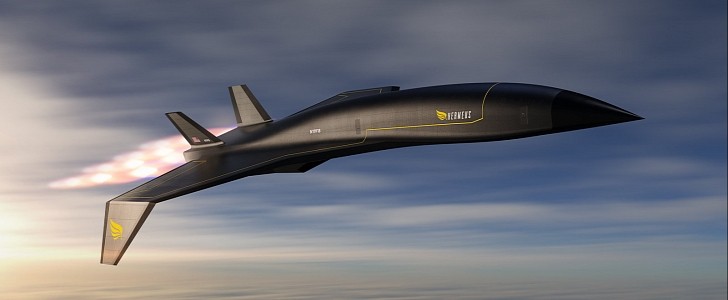Supersonic flight is old news, hypersonic is the future – we could be able to cross the Atlantic in 90 minutes sooner that we might think. Plus, the line between military and civilian applications is also getting blurred. Game-changing technology is not only available for top defense projects, but can serve a dual purpose and bring forth benefits that we can all enjoy.
If you were impressed by Virgin Galactic's Mach 3 speed, hear this – there’s another hypersonic aircraft on the block, that takes it up to 5. That’s more than 3,800 mph (6,100 km/h), meaning that it could get from New York to London almost 7 times faster than current commercial airlines.
The small team at Hermeus Corporation, a Georgia-based aerospace start-up, wanted to develop a groundbreaking Mach 5 commercial aircraft, and they already scored partnerships with none other than NASA and the U.S. Air Force (USAF). After successfully demonstrating their Mach 5 engine last year, now it’s time for another milestone, flight testing this cutting-edge aircraft, under a $60 million contract with USAF.
Not too many details have been revealed about the Quarterhorse, other that it will become the world’s fastest aircraft (flying at Mach 5 hypersonic speeds), it will be fully reusable, and it will also be autonomous (with the option of being remotely piloted), with an outstanding 4,600-mile (7,403 km) range.
Hermeus’ main innovation is the TBCC (turbine-based combined cycle) engine, based on their GE J85 jet engine. Earlier this year, the company partnered with NASA, to further develop and mature this technology.
Recently, the company was awarded a $60 million contract by USAF, for testing this autonomous high-speed aircraft, which will also be the first of its kind to be powered by a TBCC engine. If you think that’s a lot, the guys at Hermeus said that full flight testing for a TBCC engine would normally require at least $100 million, but that they’re using a non-traditional approach. In their own words, they want to “push more risk”, in order to speed up the learning process and increase safety levels for future public use.
With NASA also actively working on bringing supersonic commercial flight back on the map, it looks like a new era of high-speed aviation is dawning.
The small team at Hermeus Corporation, a Georgia-based aerospace start-up, wanted to develop a groundbreaking Mach 5 commercial aircraft, and they already scored partnerships with none other than NASA and the U.S. Air Force (USAF). After successfully demonstrating their Mach 5 engine last year, now it’s time for another milestone, flight testing this cutting-edge aircraft, under a $60 million contract with USAF.
Not too many details have been revealed about the Quarterhorse, other that it will become the world’s fastest aircraft (flying at Mach 5 hypersonic speeds), it will be fully reusable, and it will also be autonomous (with the option of being remotely piloted), with an outstanding 4,600-mile (7,403 km) range.
Hermeus’ main innovation is the TBCC (turbine-based combined cycle) engine, based on their GE J85 jet engine. Earlier this year, the company partnered with NASA, to further develop and mature this technology.
Recently, the company was awarded a $60 million contract by USAF, for testing this autonomous high-speed aircraft, which will also be the first of its kind to be powered by a TBCC engine. If you think that’s a lot, the guys at Hermeus said that full flight testing for a TBCC engine would normally require at least $100 million, but that they’re using a non-traditional approach. In their own words, they want to “push more risk”, in order to speed up the learning process and increase safety levels for future public use.
With NASA also actively working on bringing supersonic commercial flight back on the map, it looks like a new era of high-speed aviation is dawning.








